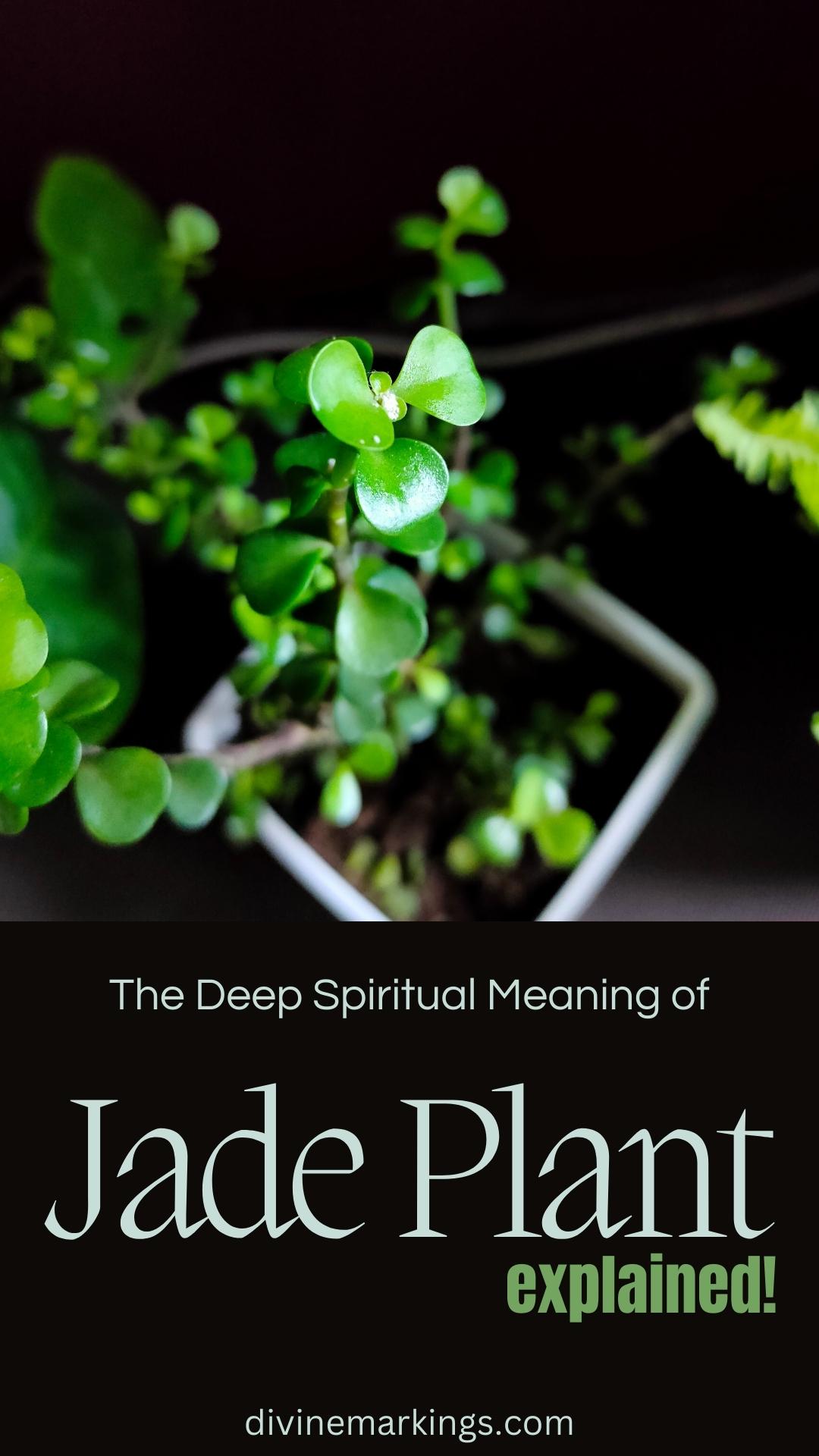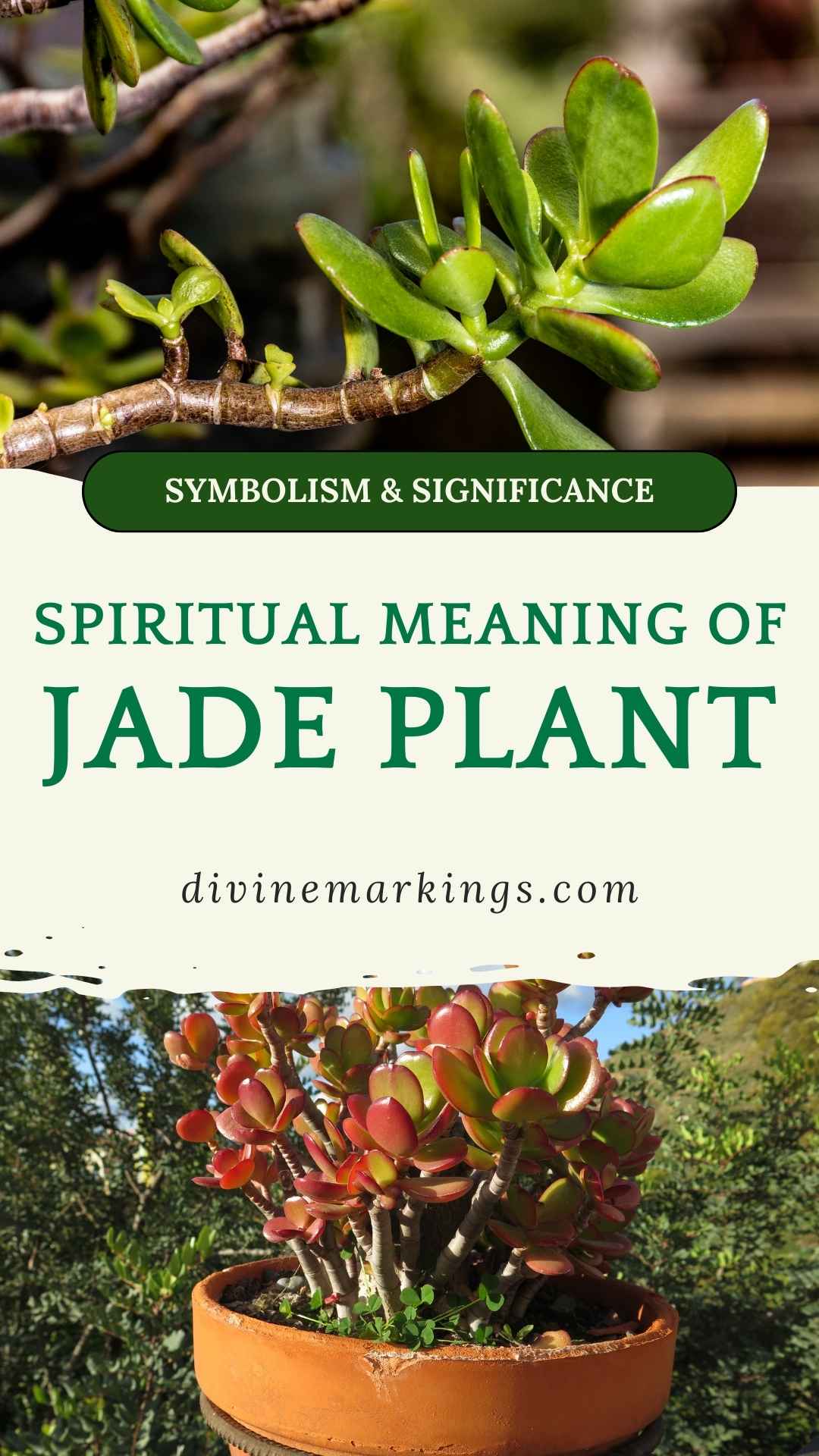The jade plant, or Crassula ovata (also known as Money Plant), is more than just a beautiful houseplant. It is believed to carry deep spiritual meanings, symbolizing growth, prosperity, and good fortune. Many cultures view this resilient plant as a sign of abundance and financial success, making it a popular choice for those looking to attract positive energy into their lives.

When you invite a jade plant into your space, you’re not just adding green to your décor; you’re also bringing a touch of luck and mindfulness. Its thick, lush leaves are thought to represent potential and new opportunities. As you care for your jade plant, you might find it serves as a reminder to stay grounded and embrace the present moment.
Understanding the spiritual meaning behind the jade plant can enrich your experience as a plant owner and add a new layer of significance to your surroundings. As you explore its symbolism throughout different cultures, you’ll discover how this simple plant can inspire you on your journey towards growth and prosperity.
Read Also: Spiritual Meaning of Poinsettia
Historical and Cultural Significance

The jade plant, with its sturdy leaves and unique appearance, has held cultural importance in various traditions. Its ties to prosperity, good fortune, and spiritual meanings are deeply rooted in history. Let’s explore how it has influenced different cultures.
Influence in Feng Shui
In Feng Shui, the jade plant is known for attracting positive energy. You might place it in the southeast corner of your home to enhance wealth and abundance. This spot is linked to prosperity and success.
The round leaves of the jade plant resemble jade coins. This connection further supports its reputation for financial growth. Many people believe that having a jade plant in business spaces can draw in customers and increase sales.
Roles in Traditional Chinese Medicine
In Traditional Chinese Medicine, the jade plant is valued for its potential healing properties. You may find it used in remedies for respiratory issues or skin conditions. Its thick leaves hold moisture, which symbolizes sustenance and vitality.
Practitioners appreciate the plant’s resilience and ability to thrive in less-than-perfect conditions. This can be a reminder to nurture physical health and take care of oneself, promoting overall well-being.
Significance in Hindu Beliefs
In Hinduism, the jade plant is linked to the goddess Lakshmi. She represents wealth, prosperity, and well-being. You might want to display a jade plant in your home to invite her blessings.
Additionally, the plant embodies abundance in life. Caring for it can symbolize your readiness to receive prosperity. Many people believe that keeping a jade plant close can enhance their good fortune and success.
Connections to Chinese Folklore
In Chinese folklore, the jade plant is often associated with luck and fortune. Stories say that giving a jade plant as a gift during the Chinese New Year can invite happiness into the recipient’s life.
The symbolism of good luck is strong within the culture. Many believe that the plant helps to ward off negative energy. Its presence in homes can create a sense of harmony and balance, enhancing the mood of the environment.
Botanical Profile of the Jade Plant
The jade plant is a popular succulent known for its striking appearance and ease of care. Understanding its physical traits and ideal growing conditions can help you maintain its health and beauty.
Physical Characteristics
The jade plant, or Crassula ovata, features thick, glossy leaves that are often oval-shaped. These leaves are a vibrant green, sometimes with reddish edges when given enough sunlight. The plant can grow up to 3 feet tall and spread about 2 feet wide. Its stems are woody, giving it a sturdy appearance.
The jade plant can produce small, star-shaped flowers, usually in late winter or early spring. These blossoms are rare but can happen if your plant is healthy and well-cared-for. The jade plant’s resilience is notable, making it a great choice for beginners or those with a busy schedule.
Optimal Growing Conditions
To thrive, jade plants prefer bright, indirect sunlight. Placing them near a south-facing window is ideal. They need about 4-6 hours of light daily for best growth. If they receive too little light, their leaves may become leggy and weak.
When it comes to watering, less is often more. Allow the soil to dry out completely between waterings, usually every 2-3 weeks. Use a well-draining soil mix to prevent root rot. Jade plants prefer low humidity, making them suitable for most indoor settings. You can easily propagate your jade plant by taking leaf or stem cuttings and allowing them to callous before placing them in soil.
Spiritual and Symbolic Meanings
The jade plant is rich in spiritual and symbolic meanings, often associated with good luck, prosperity, and emotional balance. Understanding these associations can deepen your appreciation for this unique plant and its significance in your life.
Symbolic Representation of Plant Features
The jade plant’s thick, green leaves represent growth and abundance. Each leaf stores water, symbolizing wealth and the idea that prosperity can be nurtured over time. The round shape of the leaves is thought to attract positive energy, making it a popular choice for homes and offices.
In Feng Shui, this plant is often placed in locations that enhance harmony and balance within a space. By inviting stability and strength, the jade plant promotes emotional tranquility. The beauty of its lush foliage also boosts the aesthetic quality of your environment, providing both physical and spiritual nourishment.
Jade Plant and Numerology
In numerology, the jade plant is often linked to the number 3. This number symbolizes creativity, harmony, and growth, mirroring the plant’s qualities. When placed in your home, a jade plant encourages success in financial endeavors and enhances personal relationships.
The connection to the heart chakra is another important aspect of its spiritual significance. This connection helps you build strong bonds with friends and loved ones, promoting emotional balance. Additionally, the influence of planet Venus enhances its associations with beauty and love. By nurturing a jade plant, you invite these powerful energies into your life, making it a lucky plant for anyone seeking fortune and stability.
Practical Implications of Jade Plant Care
Caring for your jade plant is easy and rewarding. Understanding its needs helps you avoid common issues while promoting a healthy environment for growth. Let’s explore its low-maintenance requirements and some common problems you might face.
Low-Maintenance Requirements
Jade plants are known for their low-maintenance nature. They thrive in bright, indirect light, making them perfect for indoor spaces.
- Watering: Water your jade plant only when the top inch of soil feels dry. Overwatering can lead to root rot, a serious issue.
- Soil: Use well-draining soil to prevent excess moisture. A cactus mix works well.
- Pruning: You don’t need to prune often, but trimming dead leaves helps the plant focus energy on new growth.
- Stress Reduction: Caring for your plant can reduce stress. The simple acts of watering and checking on your jade can provide a calming routine.
Common Issues and Solutions
Even with its easy care, you may face a few challenges. Here are some common problems and quick fixes:
- Overwatering: This is one of the biggest mistakes. Symptoms include wilting or dropping leaves. If this happens, reduce your watering schedule and ensure proper drainage.
- Root Rot: If you notice black, mushy roots, it’s a sign of root rot. Remove the plant from the pot, trim off the affected roots, and repot it in fresh, dry soil.
- Leaf Drop: If leaves drop suddenly, check for sudden changes in light or temperature. Adjust the plant’s location as needed.
Jade Plant in Health and Well-being
The jade plant offers several benefits that can enhance your health and well-being. Its healing properties and impact on mental health make it a thoughtful addition to your home.
Medicinal Uses and Healing Properties
The jade plant has some interesting traditional uses in herbal medicine. While not a replacement for professional medical treatment, its leaves are sometimes used to make teas. These teas are thought to aid digestion and improve overall health.
In your environment, the jade plant is known for its air-purifying qualities. It helps remove toxins, creating a fresher atmosphere. This can support better respiratory health and overall well-being, making your space more inviting.
Mental and Emotional Health Benefits
Having a jade plant at home can promote feelings of inner peace and emotional balance. Its lush greenery is pleasing to the eye and can help reduce stress after a long day.
You might find that caring for the jade plant encourages personal growth. The simple act of tending to a living thing can help you focus more on the present moment. This mindfulness is beneficial for your mental clarity and overall mood.
Jade Plant in Life and Relationships
The jade plant holds special meaning in life and relationships. It symbolizes growth, friendship, and financial success. This cheerful houseplant encourages mindfulness and optimism, making it a wonderful addition to your home.
As a Symbol in Personal Development
The jade plant represents personal growth and resilience. Its ability to thrive even in tough conditions is a reminder that you can overcome challenges. Each leafy branch can inspire you to reflect on your journey and the progress you’ve made.
Caring for a jade plant also encourages mindfulness. As you water and nurture it, you practice patience and gratitude for your own growth. This can build a positive mindset that enhances your creativity and motivation in everyday life.
The Role in Gifting and Social Bonding
Giving a jade plant as a gift can strengthen relationships. Often called a “friendship tree,” it symbolizes warmth and nurturing connections. Whether it’s for a housewarming or a special occasion, this gift promotes good fortune and positivity.
In many cultures, plants are believed to attract financial success. Sharing a jade plant might bring luck to your friend’s home. This simple act can foster goodwill and deepen your bond, showing that you wish them prosperity and happiness.
Frequently Asked Questions
This section addresses common questions about the jade plant’s spiritual meaning and its effects on various aspects of life. You’ll find answers related to symbolism, love, gifting, placement, and even the meanings behind different colors.
What do jade plants symbolize in terms of spiritual significance?
Jade plants symbolize growth, renewal, and good luck. Many cultures view them as a sign of prosperity and abundance. They can also represent mindfulness and staying grounded in the present.
How can a jade plant influence love and relationship energy?
Jade plants are believed to attract positive energy into your relationships. Their presence can foster harmony and communication, making them a lovely addition to spaces where you nurture connections with loved ones.
What are the meanings associated with giving a jade plant as a gift?
Giving a jade plant is often seen as a gesture of good fortune and well wishes. It symbolizes hope for growth and prosperity in the recipient’s life, making it a meaningful gift for special occasions.
Are there any specific benefits to placing a jade plant in the bedroom?
Placing a jade plant in the bedroom can promote a calming atmosphere. Its energy may enhance feelings of love and connection, creating a peaceful environment for rest and intimacy.
How should you position a jade plant in your home for favorable energy?
To maximize the jade plant’s positive energy, position it in areas that attract good fortune. Common spots include the wealth corner, which is the farthest left corner from the entrance, and spaces that receive plenty of natural light.
Can different colors of jade plants, such as white and red, have unique spiritual meanings?
Yes, different colors of jade plants can symbolize distinct meanings. For example, a white jade plant may represent purity and clarity, while a red jade plant can symbolize passion and vitality, adding layers to their spiritual significance.
